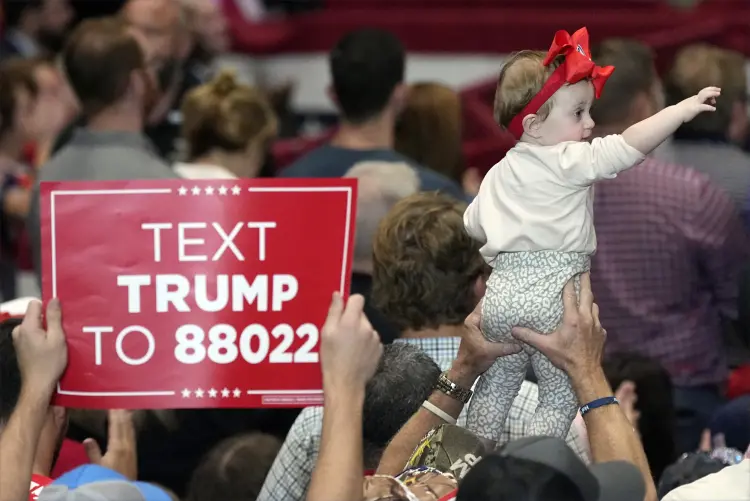The Enduring "c"onservative Majority
In 1968, Kevin Phillips wrote a book called “The Emerging Republican Majority.” Its theory was that the 1952-1964 elections had demonstrated that the Republican Party had succeeded in breaking off southerners and working-class white voters in sufficient numbers that the days of the New Deal Coalition were behind us.
At the time, Phillips’ idea seemed a stretch. Democrats had won massive electoral victories in five of the last nine elections, and Republicans had only captured the White House by running a beloved five-star general and war hero whose politics were so vague that he had been considered a prospective candidate for both parties. Yet Phillips certainly looked prophetic the very year his book was published when Richard Nixon won the presidency with almost exactly the coalition Phillips had described.
Oddly, the author’s own fate presaged the unraveling of that coalition. Kevin Phillips would leave the Republican orbit, spending much of the rest of his life writing blistering critiques about the direction of his erstwhile party. In particular, the GOP’s embrace of what he considered plutocratic policies was a betrayal of the populist energy that he saw as powering the majority he’d envisioned.
Working-class voters eventually agreed. Ross Perot was probably the immediate catalyst for breaking them off from the Republican coalition, but it was Bill Clinton who would draw them into a coalition with the traditional Democratic base and suburbanites turned off by the increasingly aggressive cultural conservatism of the Republican Party.
This, in turn, generated a book called “The Emerging Democratic Majority” by John Judis and Ruy Teixeira. Judis and Teixeira’s book seemed almost as poorly timed as Phillips’ coming out as it did shortly after the GOP’s success in the 2002 midterm elections. Yet by the end of the decade, the coalition they had envisioned more-or-less took shape in Barack Obama’s 2008 landslide victory.
It, too, fell apart, this time surprisingly quickly. By the 2010 midterms, the Obama coalition was dead in the House; four years later, Republicans had the Senate and two years later claimed the presidency. This was the topic of my book “The Lost Majority,” which posited that all political coalitions are highly contingent, and that much of the periodization of American electoral history was an attempt to force order onto a political history that was largely chaotic.
What I’ve come to believe, however, is that what we really see over the course of American history is something more akin to an enduring conservative majority. Note, however, that conservative there is spelled with a small c. Americans fundamentally like stability; our version of a revolution comes in elections where one side or the other rocks the boat too violently.
This is why change in this country comes in short spasms before being shut down – and it’s been this way for quite some time. In 1888, voters gave Republicans unified control of government for the first time in decades. The party so aggressively pursued its vision of “a school on every hilltop and no saloon in the valley” that in the next midterm election, they lost an astonishing 90 House seats during a time of peace and prosperity. In 1912, a split in the Republican Party led to a substantial Democratic trifecta; the spate of legislating was rewarded by Democrats losing 60 House seats in 1914. Flurries of legislative activity from 1933-1938, 1965-66, and 2009-10 all led to Americans becoming uneasy about the rate of change emanating from Washington.
All of this is typically fine because, for much of U.S. history, the parties have largely been dedicated to pursuing the median voter and have had strong centrist factions that have pulled back from the more aggressive members of the caucus.
But in our era of hyper-polarized parties, things function differently. We have two parties increasingly dominated by their anti-institutionalist factions, and which are convinced that the other side is not only wrong, but evil. We can debate which party is more to blame if we wish, but that doesn’t hide the fact that notions of norms, restraint, and compromise have all fallen by the wayside.
Take Joe Biden. He was elected mostly for two reasons: to get the COVID pandemic under control and to return a sense of normalcy to Washington. Instead, he aggressively pushed to expand government, essentially opened the border, leaned into aggressive cultural liberalism, and ignored the growth of inflation (a uniquely poisonous economic indicator). Perhaps crucially, he sought reelection when it was clear he was no longer up for the job.
Now we have Donald Trump, who was probably elected in reaction to the aggressive cultural liberalism and in reaction to that inflation. Obviously his second term has yet to unfold, but so far the executive orders and post-campaign promises do not portend a return to normalcy.
Again, we’ll have to see with Trump’s second presidency. Perhaps voters will reward the disruption. I’m skeptical.
It feels almost cliché to end a piece like this with a Yeats reference, but our current mood is one where the center truly cannot hold, and that things seem destined to fall apart in our ever-widening gyre. America is still at its core a center-right country with an emphasis on the center; one that that values a stability that empowers people to pursue happiness as they see fit.
2024 Key Senate Races
Get caught up on the most important polling for the most consequential races of 2024.

